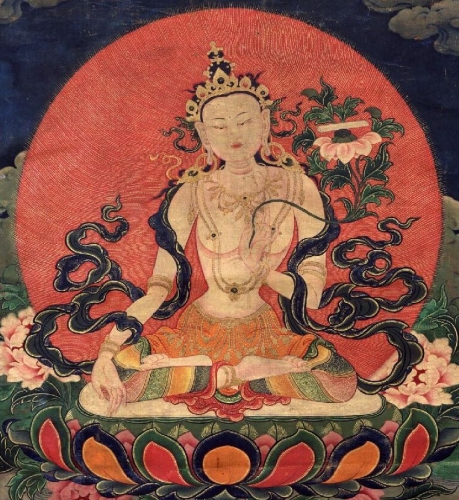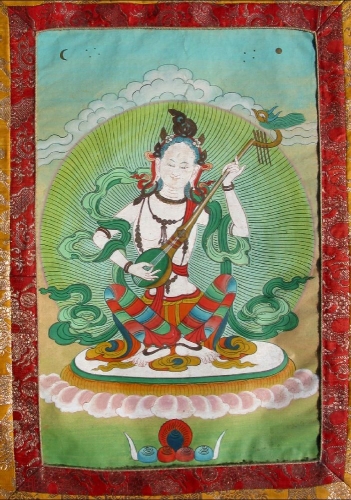Buddhist practice and Buddhist art have been inseparable in the Himalayas ever since Buddhism arrived to the region in the eighth century. But for the casual observer it can be difficult to make sense of the complex iconography. Not to worry—Himalayan art scholar Jeff Watt is here to help. In this “Himalayan Buddhist Art 101” series, Jeff is making sense of this rich artistic tradition by presenting weekly images from the Himalayan Art Resources archives and explaining their roles in the Buddhist tradition. Last week Watt unwound some of the confusion around peaceful and wrathful deities, and this week he leads us to pristine underestanding of wisdom deities.
Himalayan Buddhist Art 101: Wisdom Deities

Meditational deities (yi dam) and wisdom deities (ye she pa’i lha) are synonymous in Buddhist tantra. A “wisdom deity” means a deity form that represents or is an emanation of perfect and complete enlightenment.
However, there is a second meaning for the phrase “wisdom deity,” which is spelled differently in Tibetan: sherab kyi lha. In English, both words—ye she and she rab—are often translated simply as “wisdom.”
The two shades of meaning lead to a subcategory of wisdom deities called “wisdom producing deities.” These forms have the specific function of increasing intelligence, memory, eloquence, writing skills, poetry, song, education, knowledge, and most importantly, the wisdom (she rab) that leads to pristine awareness (ye she) and enlightenment. It can be said, therefore, that all wisdom producing deities are wisdom deities (ye shes pa’i lha), but not all wisdom deities are wisdom producing deities (she rab kyi lha).
The total number of wisdom deities that have a unique identity, or are their own entity (rather than existing as an emanation) is quite small compared to most other subcategories of meditational deities. The number of possible variations in bodily form, color and mood, however, are many. The two most commonly known wisdom deities are Manjushri (upper left) and Sarasvati (lower right). Both Manjushri and Sarasvati have dozens of different forms, colors, body configurations and mood.

Manjushri is understood to be an enlightened deity with the function, or activity, to increase all of the intellectual powers of the practitioner. Likewise, in tantric Buddhism Sarasvati is not an Indian cultural goddess/wife of Brahma. Instead, Sarasvati is a completely enlightened deity often paired with Manjushri as male and female consorts.
Other wisdom deities are Maitreya, the future Buddha, Prajnaparamita, the female personification of the Mahayana Prajnaparamita literature, the female deity White Vajravarahi, and the male deity White Achala.
Most of these deities are peaceful, except for Red Sarasvati and White Vajravarahi, who are semi-peaceful/semi-wrathful in appearance. The white male figure of Achala is wrathful in appearance and positioned in an unusual kneeling posture. All of these wisdom deities except for two, Vajravarahi and Achala, have a countless number of different forms and variations in appearance.